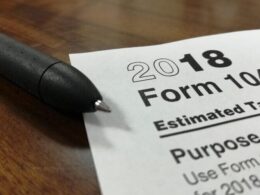NRB – bank account number is an essential element of any bank transfer. Learn more about what the NRB is, its use, and the correct examples of NRB.
What does NRB mean? Definition of the term
NRB– bank account number is a number that is assigned to a specific bank account. It can be found on every bank statement and credit or loan agreement. The NRB is necessary for bank transfers and other financial operations. To use banking services efficiently, it is a good idea to memorize your NRB. It’s also a good idea to have it on hand in case you need to contact your bank – for example, if you lose your ATM card or have other problems.
Use of NRB
A bank account number, also called NRB, is a number that identifies an individual bank account. It is used by banks to transfer funds and to identify the bank account in the banking system. The NRB is also used by financial institutions, such as credit companies, to verify the identity of the bank account owner.
The NRB is used by banks to transfer money between bank accounts. For this purpose, banks use the SWIFT banking system, which is an international banking system. SWIFT allows banks to exchange information about bank transactions and funds between bank accounts.
The NRB is also used by financial institutions, such as credit companies, to verify the identity of a bank account holder. For this purpose, these institutions use the IBAN banking system, which is an international banking system. IBAN allows financial institutions to verify the identity of the bank account owner and the funds in the account.
The IBAN is also used by individuals to transfer funds to other people’s bank accounts. For this purpose, these individuals use the SEPA banking system, which is an international banking system. SEPA allows individuals to transfer money to other people’s bank accounts throughout Europe.
Correct NRB – an example
Banks in Poland are required to follow certain rules when it comes to bank account numbering. The correct bank account number consists of 26 digits, divided into three parts. The first part is the so-called ABI code, or bank code. The second part is the CAB code, or bank branch code. The third and final part is the personal or business account number. Below is an example of a valid bank account number:
12 3456 7890 1234 5678 9012 3456
As you can see, the bank account number consists of three parts. The first part is the ABI code, or bank code. The second part is the CAB code, or bank branch code. The third and final part is the personal or business account number. In the case of a bank account number, the ABI code and CAB code are entered in the form of digits, while the personal or business account number is entered in the form of letters. A correct bank account number should have a proper checksum.
It is worth knowing that the bank account number is the only unique identifier of a given bank account. This means that the bank account number is as important as the PESEL number or ID card number. Therefore, when you provide a bank account number, you should make sure that it is correct. Otherwise, there may be undesirable consequences, such as the diversion of funds to another bank account.




